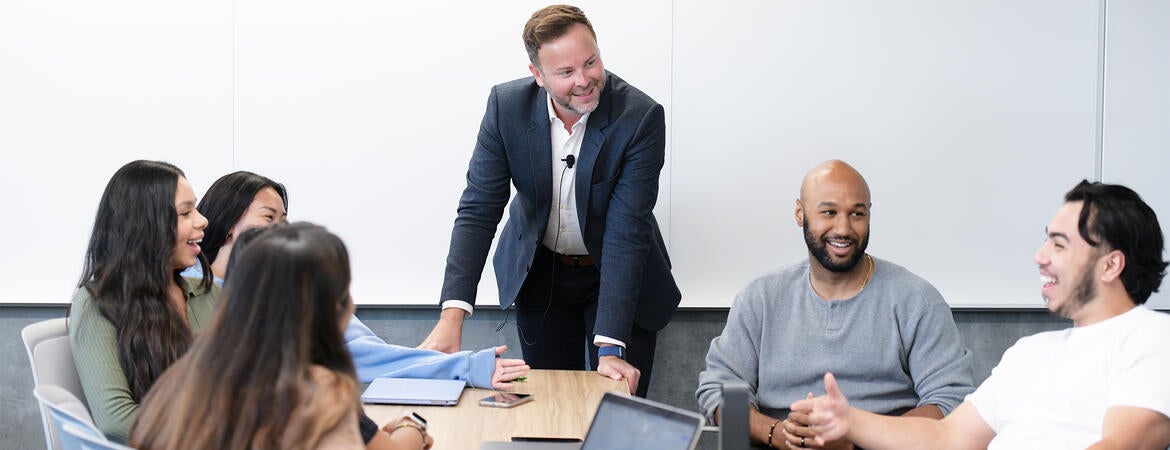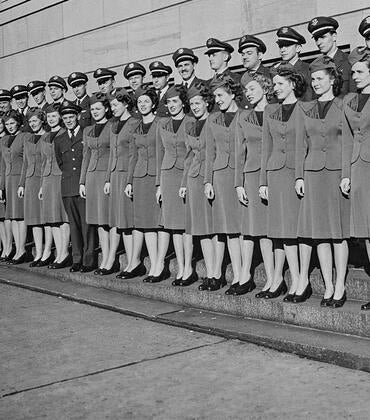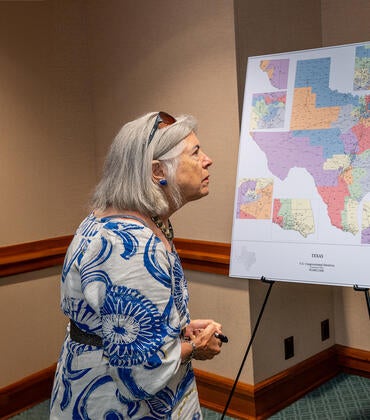
One way to really learn a topic is to try to master it well enough to explain it to others.
Kyle Ingram, an assistant professor of teaching in the School of Business at UC Riverside, takes this strategy to new heights with a college teaching method he developed called “Carry the Class.” It empowers students by having them lead class discussions, explain reading assignments, or contribute critical perspectives, among other leadership roles.
The results go well beyond student presenters mastering a particular concept. Ingram found that involving students in instruction changed classroom dynamics by fostering a sense of ownership and encouraging more meaningful social interactions among students and faculty.
What’s more, the instruction is structured in ways that allow all students to be heard, validated, and valued—creating a sense of community and shared purpose, Ingram has found. These methods are detailed in a paper titled “Carry the Class: A Strategic Approach to Designing Engagement Around Student Needs,” published in the journal Management Teaching Review.
Ingram’s approach is rooted in a methodology that blends theory, reflective practice, and attention to equity. He draws not only on established scholarship but also on patterns he’s observed firsthand over years of teaching and course redesign.
For example, he noticed years ago that small groups of students often helped teach the class—though unintentionally. They’re the ones who speak up regularly, keep discussions moving, and answer the instructor’s questions. While these discussions are helpful, the social dynamic is inequitable. The students who stay silent may be doing so because they are new to college, managing outside responsibilities, or unsure if they’re welcome in the conversation. Many who opt out do so not out of apathy but because of caution.
“The students who are struggling the most are often the ones whose silence is interpreted as disengagement,” he said.
His student-centered model strives to address the dynamic, diverse, and often different needs of undergraduates. Classes can be structured for equity by identifying which students tend to carry the burden of classroom engagement—and then redistributing that load thoughtfully to all students.
“When instructors know which students are most likely to carry the class, they can decide whether to support them or reduce their load,” Ingram explained. “When instructors know who is least likely to engage, they can design ways to activate that group.”
Professors using the Carry the Class method assign each student specific dates to lead class discussions, using a shared spreadsheet so all students can see who is responsible for which segment of the course content. Students receive clear instructions that outline expectations for their facilitation, which is limited to roughly one-fourth of the class time. The professor helps prepare the students by providing readings, discussion prompts, and examples of effective facilitation. Each student is expected to critically analyze the material, identify key themes, and guide a class discussion that promotes peer interaction and critical thinking.
During the discussion, the professor observes and evaluates student performance using a detailed rubric, offering feedback to support improvement. Weekly support and check-ins are offered to ensure preparedness and uphold the reciprocal nature of the method. Ultimately, Ingram’s work points to a profound shift in how we view student success.
“Students oftentimes don’t have the opportunity to say exactly what they want,” Ingram said. “Carry the Class gives them ownership of their contribution.
“They are also coming out of it with a good feeling and gaining some skills that aren’t really part of the class, like public speaking. It’s such a simple way to instill a skill that will aid in their career path, regardless of what they’re studying.”





